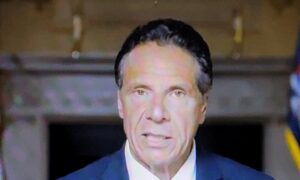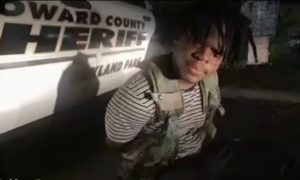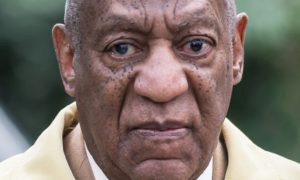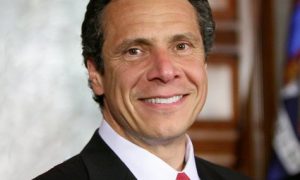“Hiring more white teachers is not the best way to improve education for students, particularly students of color.” This recent commentary by a black student from New Orleans in the Washington Post predictably aroused the ire of readers who accused the young man of reverse racism, playing the race card and divisiveness.
That’s no surprise. Race is the third rail of education. Touch it and get scorched. But when it comes to the need for more teachers of color—and, conversely, the idea that placing black students with white teachers isn’t a fix-all—overwhelming research and historical evidence say that this is where our attention needs to be.
The idea that racial diversity in classrooms has automatic benefits is a proven myth when it comes to black educational achievement. Sixty years after Brown v. Board of Education, wide disparities exist between students of color and white students across all aspects of public education. According to data from the U.S. Department of Education, black students trail white classmates on every academic criterion and marker of school quality, while black youths far exceed white classmates in suspensions, expulsions and arrests.
The numbers are stark and straightforward: Educational attainment is greatly influenced by race. But these bleak statistics don’t tell the full story of the impact of race on educational outcomes.
In all the discussion of resources, testing and parental involvement, what we don’t hear enough about is this: Students of color perform better with teachers of color (pdf)—academically, socially and emotionally. According to a Center for American Progress report on retaining teachers of color in public schools, “Teachers of color are more likely to work and remain in high-poverty, hard-to-
staff urban schools and districts than their white counterparts. … What’s more, teachers of color areknown to be personally committed to the success of children of color … ” Yet as our student population grows more diverse, the people standing in front of classrooms remain predominantly white.
For the first time, black children and other students of color are now the majority in public schools, and what was a racial and ethnic gap between students and teachers is becoming a chasm. But a new historical portrait of the teaching profession reveals that the racial composition of the teachers who instruct black children has been a perennial issue since the 19th century, full of highs and lows and fraught with resistance and setbacks.
Dana Goldstein’s recently released The Teacher Wars: A History of America’s Most Embattled Profession tracks the journey of black students from Reconstruction, and black teachers inspired to “supplant memories of slavery with those of racial pride,” to today’s highly charged debate on teacher tenure, marketed to black and Latino parents as a cure-all for what ails their children’s education. Goldstein’s thorough historical treatment supports the principle that teachers of color matter. This isn’t a hunch—it’s a fact based on solid, extensive evidence.
The abolition of slavery and the subsequent Reconstruction in the South spawned the nation’s first historically black colleges, established to train black teachers to uplift the race. Black teachers taught formerly enslaved people to read and write, and the literacy rate increased dramatically. The outgrowth of this era produced the all-black M Street High School in Washington, D.C., whose faculty was better-educated and credentialed than white counterparts in the District’s public schools. Anna Julia Cooper, the principal of M Street and a leading black scholar of her day, steered black students into the nation’s top colleges and universities. Underscoring Cooper’s educational success with black youths at the turn of the century was a steadfast commitment to “black schools led by black educators.”
Fast-forward five decades, and Cooper’s dream was decimated. In the 11 years following theBrown v. Board of Education ruling, the ranks of black teachers plummeted, along with the great hope that the Brown decision would solve racial inequalities in education. In Northern cities, de facto segregation continued unabated. In the South, desegregation was slow and deeply resisted. As the displacement of black educators became the norm, and the “broken promises” of integration became more apparent, the resentment of black and Latino parents smoldered.
Source: TheRoot.com
[AdSense-A]

















































































































































































































































![[Video] Chicago Police Officers Caught On Video Telling Two Black Men "We Kill Mother F**kers"](https://earhustle411.com/wp-content/uploads/2018/07/evil-cop-3-300x180.jpg)
![[Video] Chicago Police Officers Caught On Video Telling Two Black Men "We Kill Mother F**kers"](https://earhustle411.com/wp-content/uploads/2018/07/evil-cop-3-80x80.jpg)












![[Video] White Woman Calls The Cops On Black Real Estate Investor, Cops Threaten To Arrest Her For Harassing Him](https://earhustle411.com/wp-content/uploads/2018/05/nosy-neighbor-300x180.png)
![[Video] White Woman Calls The Cops On Black Real Estate Investor, Cops Threaten To Arrest Her For Harassing Him](https://earhustle411.com/wp-content/uploads/2018/05/nosy-neighbor-80x80.png)


![White Scientist Says The Black Community Is Being Targeted By The Medical System, They Are Deliberatly Being Poisoned [Video]](https://earhustle411.com/wp-content/uploads/2016/05/mike-adams-300x180.jpg)
![White Scientist Says The Black Community Is Being Targeted By The Medical System, They Are Deliberatly Being Poisoned [Video]](https://earhustle411.com/wp-content/uploads/2016/05/mike-adams-80x80.jpg)








![Teenage Girl Shot In Her Stomach Three Times But Took Time To Post To Facebook [ Video]](https://earhustle411.com/wp-content/uploads/2016/02/Gangster-chick-300x180.jpg)
![Teenage Girl Shot In Her Stomach Three Times But Took Time To Post To Facebook [ Video]](https://earhustle411.com/wp-content/uploads/2016/02/Gangster-chick-80x80.jpg)







